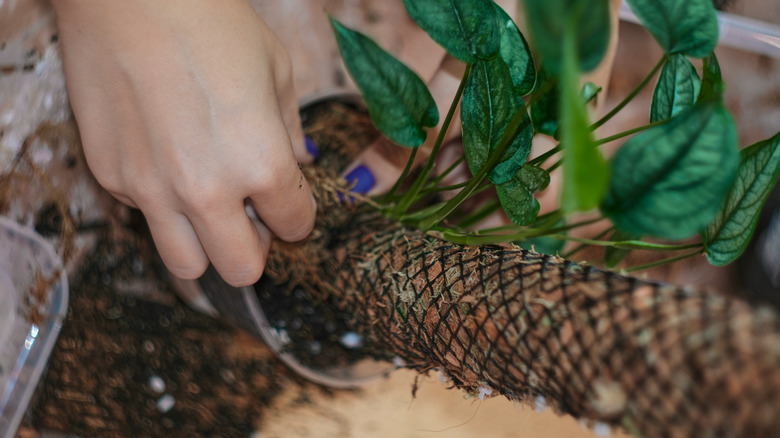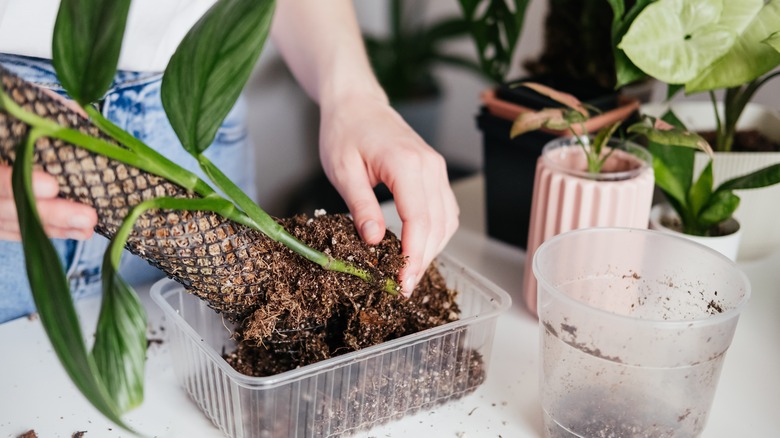The Disadvantages You Might Run Into While Using A Moss Pole For Your Plants
If you are a homeowner with a garden, then you may have some climbing plants that like to grow vertically such as pothos or ivy. Having climbing plants grow outside is easy because there are structures that they can use for support such as garden stakes or even the side of your house. However, for indoor climbing houseplants, you're going to need something extra to bolster them up. If you want to cultivate this type of plant, then you may come across moss poles. These are long poles filled or covered with moss that imitate actual tree bark to allow plants to grow up and around them. While they are extremely useful in the home, moss poles have some disadvantages, which include that they can be expensive, require maintenance, and don't last forever.
Aside from the advantage of enabling plants to climb around it, you may want to add a moss pole to your houseplants because they also provide a housing alternative for greenery in cramped areas. If you have a tiny apartment or room, you can grow your plants vertically instead of having them take up horizontal space. Using a moss pole is also a good way to ensure that your plant gets proper oxygen. Because the roots will be embedded into the moss out in the open, aeration won't be an issue. This also means a reduced risk of moisture-related root diseases such as rot. However, you should also be aware of the disadvantages of moss poles.
The moss pole isn't the poster child for cheap planting items
Moss poles may be easy to put together, but the first major disadvantage is the money you'll likely have to spend to make it work. You can get a four-pack of 25-inch long moss poles for $50 from Home Depot, or you can make the poles yourself to customize the height. You will have to carve out a chunk of cash to purchase the pole, wire mesh, twine, and bags of moss. The different types of moss used are peat moss such as sphagnum, coconut coir, and sheet moss. Even if you DIY a Dollar Tree moss pole or build one using a pool noodle, the costs can still quickly add up.
A 432-cubic inch bag of sphagnum moss retails at about $8, a 12-pack brick set of 1.4-pound coco coir goes for $40, and sheet moss sells at $7 for 325-square inches, all from Home Depot. Keep in mind that the ideal thickness of the moss around the pole should be about ½ to 1 inch for it to serve its purpose. You might have to buy multiple bags of moss depending on the length of the pole. The wire mesh costs around $23 for 27 inches-by-96 inches, and the twine you'll use to tie the moss to the pole is $6 for 420 feet at Home Depot. When you factor in all these costs, you may find that owning one is way out of your budget.
Moss poles need constant maintenace
Moss poles have to be constantly hydrated and can never dry out. This is because the plants that take root on them aerially need to draw moisture from it. Therefore, they require frequent misting and maintenance that some may see as a downside. If you are building a DIY moss pole, you have to soak the moss first before attaching it to the stake because, without adequate hydration, your plant will suffer. Coco coir isn't technically moss and doesn't hold as much water as sphagnum, whose hyaline cells let them hold more than 20 times their weight in water.
Further, as your plant grows and climbs the moss pole, you can keep adding pole length to it. However, a problem can arise if the pole gets too long. It can topple over and damage your plant and its leaves in the process. Moss poles are great tools, but great care should always be taken when using them.
Finally, another disadvantage of having a moss pole is that they do not last forever. Yours will last you a few years tops before it starts to disintegrate. That means you'll be getting new poles somewhat frequently and having to restructure and acclimatize the grown plants to fit their new home. If your moss pole is made of wood, then this may happen even sooner because no matter how durable the wood is, it is susceptible to rot as it constantly absorbs water from the moss.


